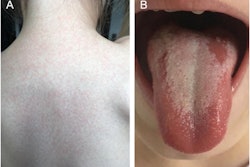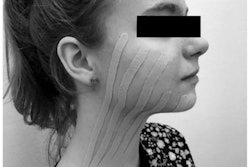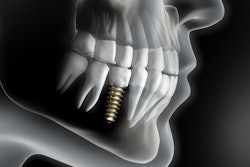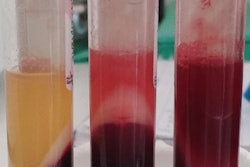
Two teens who previously used antibiotic topical acne gels experienced anaphylaxis following administration of IV clindamycin prior to third-molar surgeries, according to a case report published in Oral Surgery.
Prior to their surgeries, both patients had only previously been exposed to clindamycin via topical acne gels, which may have primed their immune systems for anaphylaxis when they internally received the antibiotic. These are believed to be the first two reported cases of perioperative anaphylaxis to IV clindamycin in healthy patients, the authors wrote.
Though the teens’ surgeries were stopped in time, the cases highlight the importance of taking thorough medical histories, including asking about topical medications, and being aware of the signs of severe allergic reactions, the authors wrote.
“We anticipate the frequency of such reactions to increase, particularly among adolescents, given the frequency of clindamycin use in oral and maxillofacial surgical procedures, the prevalence of third molar extractions among the pediatric population, and the widespread topical antibiotic use in acne treatments that can sensitize the immune system for anaphylaxis upon internal antigen reintroduction,” wrote the authors, led by Dr. Penelope Duke of the Society for Ambulatory Anesthesia in Houston (Oral Surg, March 24, 2023).
A healthy 15-year-old girl
Prior to routine third-molar extractions, the first teen, who took doxycycline for acne, was administered preoperative IV midazolam (5 mg), fentanyl (50 μg), propofol (150 mg), ketamine (15 mg), dexamethasone (8 mg), and ondansetron (2 mg).
After anesthesia induction, the girl received an infiltration of lidocaine hydrochloride 1% with epinephrine (1-to-100,000). The anesthesiologist started a prophylactic infusion of clindamycin (600 mg). The infusion was stopped when the patient started experiencing laryngospasms. Bronchospasm, hypotension, and a fast heart rate followed, and the surgery was aborted immediately, the authors wrote.
The girl was treated with inhaled albuterol, an additional 4 mg of dexamethasone, and positive pressure ventilation until she woke up. At the time, the girl was breathing heavy with stridor, was hoarse, and had lower stomach discomfort. She was provided care until her symptoms stopped and was discharged to her father, a physician, and told to monitor her closely for the same symptoms. However, the clinical picture of this case was complicated by a recent upper respiratory infection and chronic marijuana use. She was referred for allergy testing, they wrote.
Testing revealed the girl had a graded oral challenge to clindamycin. She experienced itching at a total dose of 22.5 mg of clindamycin, confirming her sensitivity and elucidating the cause of her anaphylaxis symptoms.
Furthermore, her medical history was scrutinized, revealing she used topical clindamycin for several months while taking doxycycline.
A healthy 17-year-old girl
Prior to wisdom teeth extraction, the second patient received midazolam (5 mg), fentanyl (50 μg), propofol (40 mg), ketamine (10 mg), dexamethasone (8 mg), and ondansetron (4 mg). After an uneventful 40-minute intraoperative course, she was woken up, they wrote.
She was then given clindamycin (600 mg). Within minutes, she exhibited a fast heart rate, hypertension, itching and hives on her arms and neck, difficulty breathing, and periorbital and upper lip swelling consistent with angioedema. After immediate administration of dexamethasone and diphenhydramine, she was transported to a local hospital. There, she was diagnosed with an allergic reaction and treated. Also, she was referred to an allergist.
Testing revealed the girl had a graded oral intolerance to clindamycin. She experienced itching at a total dose of 22.5 mg of clindamycin, confirming her sensitivity and elucidating the cause of her anaphylaxis symptoms, the authors wrote. A thorough review of her medical history revealed that she had used a topical clindamycin for two periods for several months at ages 13 and 15, the authors wrote.
Small threat but severe consequences
Although the incidence of intraoperative severe allergic reaction is small -- it affects an estimated 1 in 10,000 to 20,000 individuals -- the consequences can be severe and require instant intervention.
The emerging hypothesis regarding immunoglobulin E (IgE)-mediated anaphylaxis is that early avoidance of oral exposure to an antigen followed by topical sensitization increases a person's susceptibility to subsequent allergic responses when the antigen is administered internally.
“After internalizing epidermal antigens, dendritic cells migrate to cutaneous lymph nodes, where they present antigens to helper T lymphocytes,” according to the case report. “These T cells then recruit the appropriate B lymphocytes to produce allergen-specific IgE, which circulates until activated by its complementary antigen.”
In a nutshell, the first exposure via the skin prepares the immune response to produce the hypersensitivity reaction if the potentially hazardous allergen finds its way inside the body, the authors wrote. Therefore, these cases are clinically relevant to anesthesiologists and surgeons, specifically the oral and maxillofacial surgery community, the authors wrote.
“The prevalence of clindamycin both in topical acne gels and as an oral surgery prophylactic agent necessitates vigilance for signs of hypersensitivity among pediatric and young adult patients commonly undergoing third molar extractions,” Duke and colleagues concluded.




















